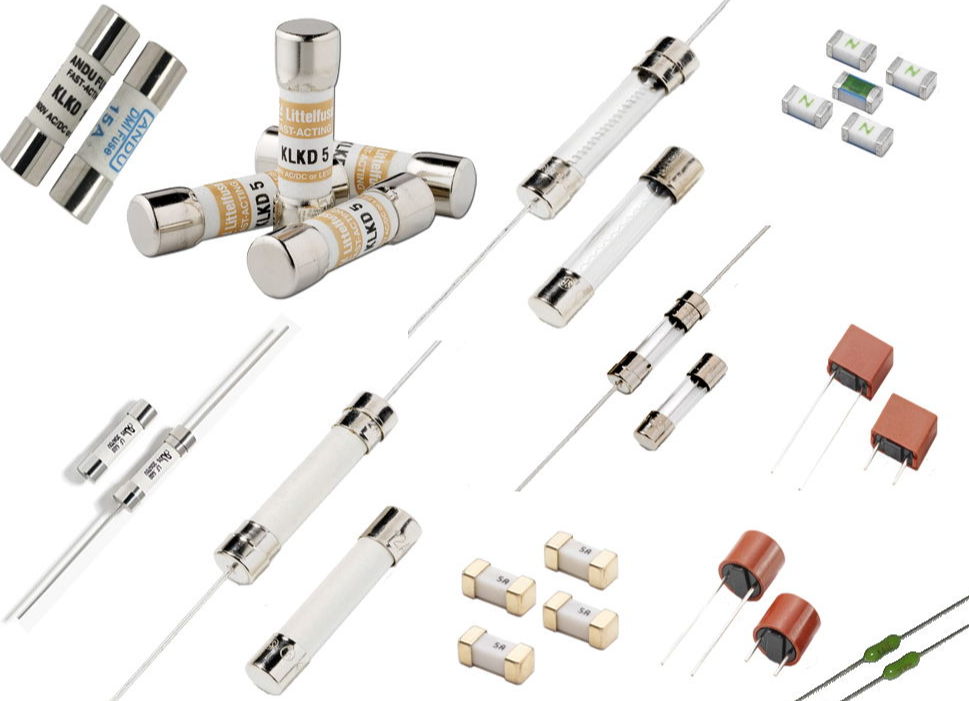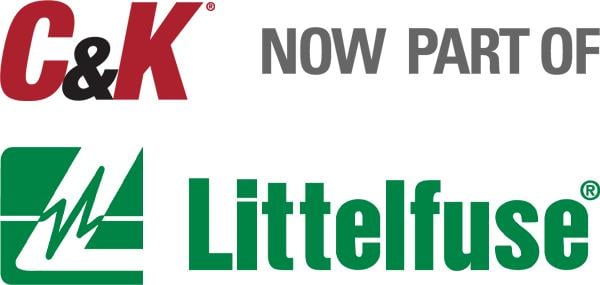Powerful Protection from Payment to Delivery
Secure and Reliable Payment
Money Back Guarantee
Shipping and Delivery
After-Sales Service
Enter the order reference number received by email to check the status or make payment.
Selecting the Correct Fuse Size: Key Considerations and Recommendations
To select the appropriate fuse amperage, start by determining the full-load steady-state current of the circuit at a temperature of 25°C (68°F). Once you have this current value, choose a fuse rating that is 135% of the current value, rounded up to the next standard value.
For example, if the normal steady-state current is 10 amps, you would choose a 15-amp fuse (10 amps x 135% = 13.5 amps, rounded up to the next standard value of 15 amps).
It is important to consider the ambient temperature in which the fuse will be used. If there are potentially very high or low temperatures, the nominal fuse current may need to be adjusted accordingly.
Fuses are designed to respond to heat generated by overcurrents. The fuse element within the fuse melts when exposed to sufficient heat. The rate at which the fuse element melts depends on the amount of heat applied. More heat will cause the fuse element to melt faster, while less heat will result in a longer melting time.
If the fuse will be exposed to a temperature higher than 25°C, the fuse amperage should be adjusted to compensate for the higher temperature and prevent unnecessary tripping. Similarly, if the fuse will be used in a lower temperature environment, the fuse amperage should be reduced to ensure it will open when necessary.
As a general rule of thumb, for every 20°C increase or decrease in temperature, the fuse amperage should be re-rated to be 10-15% higher or lower, respectively.
1. 1 Amp Fuse
1.1 Basic Information about 1 Amp Fuse
Ceramic fuses with a 1 amp rating are commonly used in various applications. These fuses are known for their reliable performance and cost-effective circuit protection. One of their primary uses is in plugs, where they serve to prevent cables from becoming overloaded and potentially melting or causing a fire.
1.2 Frequently Asked Questions about 1 Amp Fuse
1. What color is a 1 amp fuse?
Fuse colors are often used to indicate their amp ratings. For a 1 amp fuse, the color code is black.
2. How many watts can a 1 amp fuse handle?
To determine the maximum wattage a 1 amp fuse can handle, you need to consider the voltage. For example, if we assume a voltage of 230 volts, the calculation would be as follows: 3,000 watts divided by 230 volts equals approximately 13.04 amps. Therefore, it is safe to put a maximum of 3,000 watts on a 13 amp fuse in a plug.
3. Can you replace a 1 amp fuse with a 5 amp fuse?
It is generally not recommended to replace a 1 amp fuse with a 5 amp fuse. The purpose of the fuse is to protect the device it is connected to. By using a larger fuse, such as a 5 amp fuse, you would compromise the intended protection provided by the 1 amp fuse. In the event of a device failure, the larger fuse could potentially damage the device beyond repair or even start a fire. It is important to always use the correct amp rating for fuses to ensure proper protection and safety.

2. 3 Amp Fuse
2.1 Basic Information about 3 Amp Fuse
When it comes to fuse ratings, they are typically based on the power rating of the appliance. If you find yourself needing to replace a fuse, it is important to ensure that you replace it with another fuse of the same rating after investigating and resolving the cause of the blown fuse. In a standard UK plug, a 3-amp or 13-amp fuse is usually installed.
For appliances rated up to 700 watts, a 3-amp fuse (colored red) should be installed in the plug. This includes items such as table lamps, standard lamps, televisions, videos, computers, mixers, blenders, fridges, freezers, power drills, jig saws, and soldering irons.
For appliances rated between 700 and 3000 watts (the maximum rating of a wall socket), a 13-amp fuse (colored brown) should be installed in the plug. This includes appliances like washing machines, dishwashers, microwaves, kettles, toasters, and irons.
It is worth noting that manufacturers have now standardized the plug fuse ratings to either 3A or 13A.
2.2 Frequently Asked Questions about 3 Amp Fuse
1. How many volts is a 3 amp fuse?
A 3 amp fuse is rated for 250 volts.
2. Can I use a 3 amp fuse in a 13 amp plug?
No, it is not recommended to use a 3 amp fuse in a 13 amp plug. The 13 amp plug is designed to handle higher power ratings, and using a lower rated fuse may result in the fuse not providing adequate protection. It is important to use a fuse that matches the plug's amp rating.
3. My radio calls for a 2.5 amp fuse. Can I use a 3 amp fuse?
Yes, you can use a 3 amp fuse for your radio. The fuse is there to protect the wiring, and a 3 amp fuse is well within the capability of the supply wire. It is generally acceptable to use a fuse with a slightly higher amp rating, as long as it does not exceed the maximum rating of the appliance or circuit.
3. 5 Amp Fuse
3.1 Basic Information about 5 Amp Fuse
The standard plug fuse ratings have been standardized by manufacturers to either 3A or 13A. However, 5 Amp fuses are still used in some older equipment, such as lighting circuits and shredders, and can still be purchased.
3.2 Frequently Asked Questions about 5 Amp Fuse
1. Can you put a 5 amp fuse in a 13 amp plug?
It is not recommended to put a 5 amp fuse in a 13 amp plug. Ideally, the fuse should be 1.25mm2 in size or larger to ensure proper protection with a 13A fuse. While a "6A" iron (rated in Watts) is unlikely to blow a 5A fuse, it's important to note that a 5A fuse would likely blow at around 8A.
2. What happens if I put a 5 amp fuse in a 13 amp plug?
If a 5 amp fuse is used in a 13 amp plug, the fuse in the cable will blow at 13 amps. However, the cable itself will not catch fire because it is designed to handle up to 20 amps before getting hot.
3. How many watts can a 5 amp fuse take?
If a typical lighting circuit at home is protected by a 5 amp fuse, you can multiply this value by the voltage to determine the maximum wattage. For example, with a 5 amp fuse and a voltage of 230V, the maximum wattage would be approximately 1150 Watts.
4. Can I replace a 5 amp fuse with a 25 amp fuse?
No, it is generally not recommended to replace a 5 amp fuse with a higher-amp fuse like 25 amps. Doing so is a dangerous idea and can potentially lead to fires. Fuses have specific ampere ratings because they are designed to be the weak link in the circuit, protecting electrical components.

4. 10 Amp Fuse
5.1 Basic Information about 10 Amp Fuse
A 10 amp fuse has a rating of 10A, which indicates the maximum current flow it can handle. It is designed to provide power to a circuit and protect it from excessive current. It's important to note that 10 amp fuses are not manufactured to be extremely precise and repeatable, so they may not blow exactly at 10.01 Amp. These fuses are commonly used in circuit breakers, street lighting, HID lighting, and computers.
5.2 Frequently Asked Questions about 10 Amp Fuse
1. What does a 10 Amp Fuse protect?
A 10 amp fuse is typically used to protect a circuit that carries a maximum current of 7 amps. If a higher current than 10 amps flows through the circuit, the fuse will blow, preventing any damage to the unit or cable it is meant to protect.
2. Can I use a 5 amp fuse instead of a 10 amp fuse?
It is possible to use a 5 amp fuse instead of a 10 amp fuse, but it is not recommended. By replacing a 5 amp fuse with a 10 amp fuse, you could potentially overload the circuit and cause it to short out. It's important to use the correct fuse rating for the circuit to ensure proper protection.
5 15 Amp Fuse
5.1 Basic Information about 15 Amp Fuse
A 15 amp fuse is commonly used in circuits for storage heaters or immersion heaters. The purpose of a 15 amp fuse is to protect the circuit from excessive current flow. In a 120V circuit, the fuse will blow if the power consumption exceeds 1800W (1800W / 120V = 15 amps). For example, if you have a microwave that uses 1100 watts and eight 100W light bulbs turned on, the total power consumption would be 1900W, which would blow the fuse. However, if only one bulb is turned on, the total power consumption would be 1200W, and the fuse would not blow.
5.2 Frequently Asked Questions about 15 Amp Fuse
1. Is it OK to replace a 15 amp fuse with a 20 amp fuse?
It is possible to replace a 15 amp fuse with a 20 amp fuse, but it is not advisable to do so without having an electrician evaluate the situation. Simply upgrading from a 15 amp fuse to a 20 amp fuse because the current one is tripping can be dangerous and increase the risk of electrical fire.
2. Why does my 15 amp fuse keep blowing?
The most common cause of a 15 amp fuse blowing is having too many devices plugged into the circuit. When the total power consumption exceeds 1800W, the fuse will blow to protect the circuit. Another potential cause of a blown fuse is a short circuit, which occurs when a hot wire comes into contact with either the grounding pathway or a neutral wire, causing the circuit to short out.
3. What happens if you put a 15 amp fuse in a 20 amp slot?
In most home installations, multiple 15 amp receptacles are connected to a 20 amp circuit breaker. This allows multiple devices to be connected to a single 20 amp circuit, as long as the total circuit load does not exceed 20 amps. If the load exceeds 20 amps for an extended period, the circuit breaker will open the circuit to prevent overheating and potential hazards.
4. Can I replace a 12 amp fuse with a 15 amp fuse?
It is never recommended to replace a fuse with one that has a higher current rating. Fuses are designed to protect the wiring, not the downstream devices. If you cannot find a 12 amp fuse, you can try using a 10 amp fuse instead. It is important to use a fuse with the appropriate current rating to ensure proper protection of the circuit.
6 20 Amp Fuse
6.1 Basic Information about 20 Amp Fuse
Outlet and appliance circuits that are wired with 12-gauge wire typically require a 20-amp screw-in fuse for protection. The fuse contains a strip of metal that will melt if the current passing through it exceeds its rating. When this happens, the fuse blows, the circuit opens, and all connected equipment shuts down. To determine the current flowing through a circuit, you can divide the total wattage of all working devices by the voltage. For example, a 20-amp fuse on a 120V circuit would allow you to use up to 2400W without experiencing a loss of power.
6.2 Frequently Asked Questions about 20 Amp Fuse
1. What can happen if I replace a 20 amp fuse with a 30 amp fuse?
Replacing a 20-amp fuse with one rated at 30 amps is dangerous because it may not blow soon enough to protect the circuit. This can potentially damage electrical components or even start a fire. It is important to always use the correct fuse rating for your circuit to ensure safety.
2. Can I use a 20 amp fuse instead of a 15 amp fuse in my car?
If you replace a 15 amp fuse with a 20 amp fuse in your car, it may not provide adequate protection. If the circuit is overloaded with more than 20 amps, the 20 amp fuse may not blow in time to prevent damage. It is recommended to use the correct fuse rating specified by the manufacturer to ensure the safety and proper functioning of your car's electrical system.

7 30 Amp Fuse
7.1 Basic Information about 30 Amp Fuses
A 30-amp screw-in fuse is commonly used in electric clothes dryers and air conditioners. It is designed to handle higher electrical loads and provide protection against excessive current flow.
7.2 Frequently Asked Questions about 30 Amp Fuses
1. Can you put a 30 amp fuse in a 20 amp spot?
It is not recommended to put a 30 amp fuse in a circuit that is designed for a 20 amp fuse. The fuse is designed to protect the circuit and electrical components from damage caused by excessive current flow. If you replace a 20 amp fuse with a 30 amp fuse, it may not blow soon enough to prevent damage to the circuit or even start a fire. It is important to use the correct amp rating for the fuse to ensure proper protection.
2. Can I replace a 25 amp fuse with a 30 amp fuse?
Whether or not you can replace a 25 amp fuse with a 30 amp fuse depends on the specific circumstances and the electrical system in question. If the 25 amp fuse blew due to a fault in the system, simply replacing it with a higher amp fuse may not be a safe solution. It is important to identify and address the underlying issue causing the fuse to blow. Additionally, using a higher amp fuse than what is recommended can potentially overload the circuit and cause damage. It is always best to consult a qualified electrician or refer to the manufacturer's guidelines for proper fuse replacement.
8 40 Amp Fuse
8.1 Basic Information about 40 Amp Fuse
A 40 amp fuse is commonly used in two locations within the main fuse box located in the engine compartment.
8.2 Frequently Asked Questions about 40 Amp Fuse
1. Are all 40 amp fuses the same?
No, all automotive fuses have their amperage rating clearly marked on the top of the fuse. It is important to note that the amp rating does not necessarily correspond to the physical size of the fuse. Regular-sized fuses can range from 0.5A to 40A, while Micro2 fuses range from 5A to 30A.
2. Can I use a 40 amp fuse instead of a 30 amp fuse?
In most cases, a 40 amp fuse will not fit in a 30 amp slot. Standard physical fuse sizes typically include 30 max, 60 max, and 100 max. While it is possible to use a 30 amp fuse in a 60 amp slot with the help of reducer clips, a 40 amp fuse has the same dimensions as a 60 amp fuse.
3. What color is a 40 amp fuse?
The color coding for fuses can vary depending on the manufacturer, but here is a general guide:
- Red on brown: Continuous ampere (rated current) - 6A, Instantaneous fusing ampere - 14A
- Light brown: Continuous ampere - 7.5A, Instantaneous fusing ampere - 18A
- Pink: Continuous ampere - 12.5A, Instantaneous fusing ampere - 30A
- White: Continuous ampere - 17.5A, Instantaneous fusing ampere - 40A
4. Can I use a 40 amp fuse instead of a 25 amp fuse?
In general, it is not recommended to replace a fuse with a higher-amp fuse. Fuses (and circuit breakers) are designed to blow or trip before any part of the circuit reaches a dangerous current level. Replacing a lower-amp fuse with a higher-amp fuse can pose a fire hazard and should be avoided.
5. Can you replace a 35 amp fuse with a 40 amp fuse?
If you are using a 35A fuse for an amplifier and connecting it directly to the car battery with clamps, replacing it with a 40 amp fuse should not cause any harm to the Jeep's wiring. However, it is important to note that using a higher-amp fuse than recommended for other applications can lead to damage, such as to the compressor wiring. It is always best to follow the manufacturer's recommendations and guidelines.
9 How to Calculate Fuse Rating
Calculating the correct fuse size is a simple process that can be done in three easy steps:
1) Determine the wire gauge you are using by either checking the package or measuring it.
2) Refer to the table below to find the maximum current for the corresponding wire gauge:
AWG Gauge Maximum Current (A)
0 300
1 238
2 188
3 150
4 120
5 94
6 74
7 60
8 48
9 38
10 30
11 24
12 18.6
13 14.8
14 11.8
15 9.4
16 7.4
17 5.8
18 4.6
19 3.6
20 3
21 2.4
22 1.84
23 1.458
24 1.154
25 0.914
3) Once you have determined the maximum current for your wire gauge, choose the largest fuse size that does not exceed this value. It is important not to exceed the values listed in the table. Automotive blade-style fuses are typically available in 5A increments ranging from 5A to 20A. For example, you can choose from 5A, 10A, 15A, and 20A fuses.
10 Conclusion
To conclude, when choosing a fuse's amp rating, it is important to consider the type of load and code requirements. The amp rating of a fuse should generally not exceed the circuit's current carrying capacity. For instance, if a conductor is rated to carry 20A, the maximum fuse that should be used is a 20A fuse. However, there are rare cases where the amp rating may be higher than the circuit's current carrying capacity. Motor circuits are a good example of this. Dual-element fuses can have an amp rating of up to 175 percent of the motor's full-load amps, and nontime-delay fuses can have an amp rating of up to 300 percent.
When it comes to a fuse and switch combination, the amp rating should typically be set at 125 percent of the continuous load current. This is usually selected to match the circuit capacity, which is also set at 125 percent of the load current. However, there are exceptions to this rule. For example, a fuse-switch combination may be permitted for continuous operation at 100 percent of its rated capacity.
It is important to choose the appropriate fuse size to ensure the safety and proper functioning of the electrical system. Selecting a fuse with the correct amp rating will help protect against overcurrent and prevent damage to the circuit or equipment. Always refer to the manufacturer's guidelines and consult with a qualified electrician if you are unsure about the correct fuse size for your specific application.
Recent Posts








Company
About UsContact UsTerms & ConditionsPrivacy StatementPayment,Shipping & InvoiceRefund & Return PolicyWarranty PolicyFrequently asked questionHolidays for Chinese Mid-Autumn Festival and National Day in 2023


















